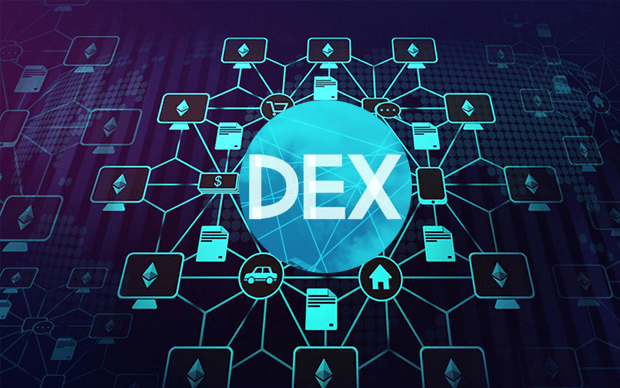Introduction
So, you’ve heard about decentralized exchanges (DEXs), but still feel a bit overwhelmed? You’re not alone. DEXs are like the wild west of crypto — exciting, full of opportunity, and a little risky if you’re unprepared. But once you understand how they work, you’ll never look at centralized exchanges the same again.
In this guide, we’ll walk you through how to use a DEX like a seasoned crypto trader. Whether you’re swapping tokens, farming yield, or diving into DeFi projects, we’ve got you covered.
Understanding the Basics
Centralized vs Decentralized Exchanges
Centralized exchanges (CEXs) like Binance or Coinbase act as middlemen. They hold your funds, manage your trades, and require verification (KYC). In contrast, DEXs let you trade directly from your wallet—no middleman, no KYC, just peer-to-peer power.
Key Features of DEXs
-
No need for account sign-ups
-
You stay in control of your funds
-
Access to a wide variety of tokens (even brand new ones)
-
Open source and community-driven
Common Types of DEXs
-
Automated Market Makers (AMMs): Like Uniswap, PancakeSwap
-
Order Book DEXs: Like dYdX
-
Aggregator DEXs: Like 1inch – they scan multiple DEXs for the best price
Setting Up for Success
Choosing the Right Wallet
Before anything, you need a wallet. MetaMask, Trust Wallet, and Coinbase Wallet are among the most popular. They act as your gateway to the DEX world.
Securing Your Wallet
Never share your seed phrase. Ever. Use a hardware wallet like Ledger for extra security. Enable two-factor authentication if supported, and back up your wallet in a safe place.
Funding Your Wallet with Crypto
You’ll need ETH for Ethereum-based DEXs, or BNB for Binance Smart Chain DEXs. You can purchase these on a CEX, then transfer to your wallet. Remember to always test with a small amount first.
Navigating a DEX Interface
Connecting Your Wallet
Head over to a DEX like Uniswap, click “Connect Wallet”, choose your wallet type, approve the connection, and you’re in.
Selecting Trading Pairs
Want to swap ETH for a meme coin? Choose your trading pair. Be sure you’re picking the correct token contract—scammers love making fakes.
Reading Price Charts and Market Data
While some DEXs offer basic charts, consider using tools like DEXTools, Poocoin, or TradingView for in-depth analysis.
Executing Trades Like a Pro
How to Make a Swap
Choose your input and output tokens, enter the amount, and hit “Swap.” Confirm in your wallet. Easy, right?
Limit Orders vs Market Orders
Some DEXs like Matcha allow limit orders. This means your order only executes at a price you set. Market orders just go with the best available price.
Understanding Slippage and Gas Fees
Slippage is the difference between the expected price and actual price. Set your tolerance wisely—too low and the transaction might fail, too high and you could overpay. Gas fees vary by network traffic—use DEXs on Layer 2 chains (like Arbitrum or Optimism) to save costs.
Advanced DEX Features
Liquidity Pools and Yield Farming
By adding tokens to liquidity pools, you earn a portion of trading fees. Yield farming takes it further by rewarding you with additional tokens. But beware: impermanent loss is real.
Staking and Earning Rewards
Many DEXs let you stake their native tokens for passive income. Think of it like earning interest in a savings account—only riskier and way more fun.
Token Launchpads and Airdrops
DEXs often host new token launches. Participating early can lead to big gains—but also big losses. Some users receive airdropped tokens just for using a DEX.
Staying Safe on a DEX
Avoiding Scams and Rug Pulls
DYOR (Do Your Own Research). Check token audits, community engagement, and use tools like TokenSniffer to analyze smart contracts.
Verifying Smart Contracts
Make sure you’re interacting with the correct contract address. Always use official sources like CoinGecko or CoinMarketCap to get links.
Monitoring Transactions on the Blockchain
Use Etherscan, BSCScan, or relevant block explorers to track your transactions and ensure nothing sketchy is happening.
Tips and Tricks from the Pros
Timing the Market
Avoid trading during high volatility unless you’re confident. Use trading bots or alerts to keep ahead.
Using Multiple DEXs
Each DEX has different liquidity. Try DEX aggregators like 1inch, Matcha, or Paraswap to get the best deal.
Keeping Track of Portfolio Performance
Use tools like Zapper, Debank, or APY.vision to manage your DeFi positions and track your earnings.
Future of DEXs
The Rise of Cross-Chain Swaps
Projects like THORChain and Chainflip are making it possible to swap assets across blockchains—without bridges.
Integration with DeFi Ecosystems
DEXs are becoming central hubs for DeFi. Expect more integrations with lending, insurance, and even gaming.
DEXs vs CEXs: The Battle Ahead
While CEXs offer simplicity, DEXs offer freedom. As more users prioritize privacy and control, DEXs are gaining serious ground.
Conclusion
Using a DEX like a pro isn’t about luck—it’s about knowledge, caution, and confidence. Once you get the hang of it, you’ll wonder why you ever trusted your crypto with centralized exchanges. Take control of your financial future, one swap at a time.
FAQs
1. What is the safest DEX to use?
Uniswap and Curve are considered among the safest due to their long track records and audited smart contracts.
2. Can I use a DEX without KYC?
Yes. Most DEXs don’t require any personal info or verification to trade.
3. What are the risks of using a DEX?
Smart contract bugs, scam tokens, and impermanent loss are common risks.
4. How do DEXs make money?
Through trading fees, which are often shared with liquidity providers.
5. Is it cheaper to trade on a DEX?
Sometimes. It depends on network fees and liquidity. Layer 2 DEXs often offer the lowest costs.
Read More Article About Crypto
